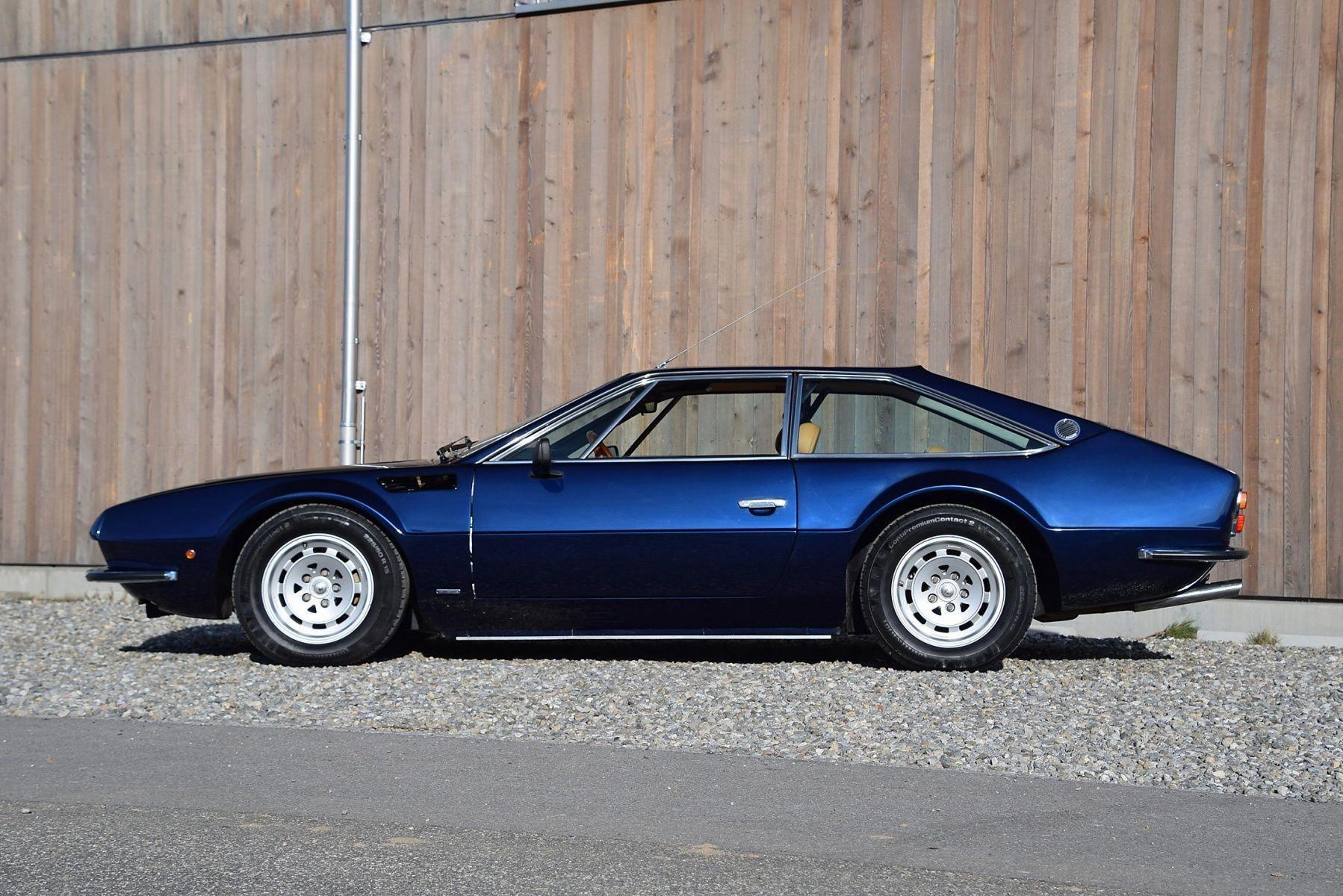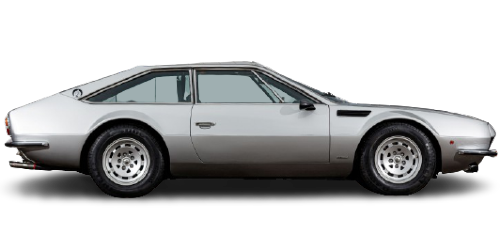The Lamborghini Jarama was kept in production for a period of two years, during which a total of 177 units were delivered, but she received some serious criticism from both journalists and owners the workmanship wasn’t too good, panel fitments left much to be desired, the dashboard looked cluttered while switches and controls weren’t always labeled logically there was room for improvement.
This came in the form of the Jarama S or GTS at the 1972 Geneva Auto Show, the overall design was kept more or less the same but there was an additional air intake on top of the engine cover a very thin horizontal opening to feed extra air into the V12 engine compartment note that the Jarama S was the only new model for Lamborghini back in 1972 and was built to order.
On the outside the bumpers were modified, the windshield wipers were now parallel action while on the original Jarama they folded together in the center, the Miura style knock-off wheels were replaced by five bolt Campagnolo units as seen on the Espada while a stylish ‘S’ took place on the rear fascia. Some sources state the taillights were modified too, some sources mention they were shared with the De Tomaso Deauville units.
The biggest change on the Jarama S could be found in the cockpit with a revised interior, the front seats now had slimmer seatbacks that resulted in more legroom for the rear passengers who now had two separated seats. The wood trim on the dashboard was replaced with brushed aluminum and the switch labeling was improved, no more switches with ‘start’ on them that released the front hood, on top of the dashboard extra air vents were installed in general the fit and finish of the interior were vastly improved. Most of the Jarama were delivered with a very nice wood-trimmed steering wheel, from 1973 on, starting with chassis (#10500) the steering wheel received leather trim.
Power-assisted steering became available during production but a handful of Jarama GTS were delivered without it, starting from 1974, a Chrysler TorqueFlite automatic transmission became optionally available, it didn’t perform too good, so only about 10 Jarama were actually equipped with it. Another option that didn’t found a lot of customers were two small removable roof panels, resulting in an ‘open-top’ Jarama, in fact only about 20 Jarama were ordered with this option, none of the Jarama GTS as far as we know. The Jarama GTS was also available in RHD configuration from the factory, about 28 were delivered in this setup.
A new, more efficient exhaust system, together with revised heads, cams and a modification of the tuning on the Weber carburetors, raised the power of the GTS up to 365 hp at 7,500 rpm, resulting in a 260 Km/h. top speed, this made the Jarama faster than the Espada at that time. An oil cooler could be fitted underneath the front section of the car, sitting so low to the street it was rather prone to damage from debris.
Despite all the improvements, the Jarama GTS still couldn’t convince buyers, only 150 units were sold when production was officially halted in 1976 but at least 5 Jarama GTS were built after that, as late as 1978 in fact partly because the Lamborghini factory was falling into severe problems and parts just weren’t delivered by suppliers anymore.
The Jarama GTS chassis # 10418 was Ferruccio Lamborghini’s personal car, it was stored in his private museum at his wine making vineyards, today it can be found at the personal museum founded by Tonino Lamborghini as a tribute to his father, Ferruccio Lamborghini bought only one brand new Lamborghini when he owned the company, this Jarama GTS #10418 with engine number #40979 (unfortunately engine is sitting in VIN #10564 now), the other cars he bought were second-hand ones like the Miura SV and the Countach S, all on display in the Museo Ferruccio Lamborghini.




